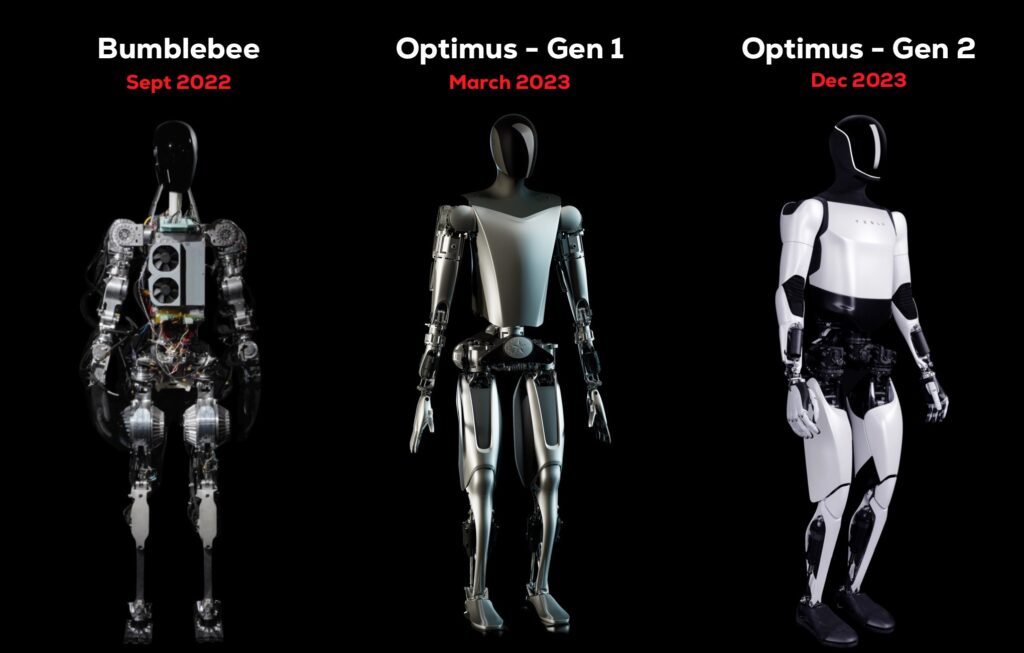Tesla New AI Robot Optimus: The Future of Robotics
Introduction to Tesla’s Optimus Robot
In a world rapidly embracing artificial intelligence, Tesla New AI Robot Optimus: The Future of Robotics has captured global attention. Officially unveiled at Tesla’s AI Day, Optimus is not just a technological marvel but a glimpse into the future of robotics, where AI can seamlessly integrate into our daily lives. Tesla New AI Robot Optimus: The Future of Robotics’s CEO, Elon Musk, envisions a future where robots like Optimus handle mundane tasks, freeing humans to focus on creativity and higher-order activities. But what makes Optimus stand out among other humanoid robots? And why is it creating such a buzz after its recent interactions with humans?
Key Features of Tesla’s Optimus AI Robot
Tesla’s Optimus robot showcases the company’s expertise in AI, machine learning, and hardware design. Standing at 5’8″ and weighing 125 pounds, it mimics human movement with precision, thanks to its agile design and actuators. Optimus is equipped with safety features, using internal sensors to detect obstacles and adjust movements, ensuring safe operation around people.
The Importance of AI in Robotics: Tesla’s Approach
Tesla’s approach to robotics is different from traditional robotics companies. By leveraging AI, the company aims to create robots that can adapt to various scenarios autonomously. Optimus is designed to learn from its environment, making real-time decisions without needing constant human input. This is a significant leap in AI robotics, as it opens doors to a new level of autonomy.
Tesla’s expertise in artificial intelligence, particularly from its work on autonomous vehicles, provides a strong foundation for Optimus’s decision-making capabilities. The same neural networks that allow Tesla cars to navigate roads are now helping Optimus navigate the world around it.
The Future of Humanoid Robots: Challenges and Opportunities
While Optimus is an impressive prototype, Tesla still faces several challenges in bringing the robot to market. Ensuring that the robot can operate safely in complex human environments, scaling production, and refining its AI capabilities are all hurdles that Tesla must overcome. However, the potential opportunities are equally vast. Humanoid robots could revolutionize industries, create new job categories, and even become a common presence in households.
What’s Next for Tesla’s Optimus?

While the debut of Optimus has been met with enthusiasm, it’s clear that this is only the beginning for Tesla’s humanoid robot. In the short term, Tesla plans to continue refining Optimus’s AI and hardware, focusing on improving its ability to perform a wider range of tasks autonomously.
Some of the immediate upgrades expected for Optimus include enhanced motor control, better AI decision-making algorithms, and the ability to learn from its environment more efficiently. These improvements will likely make Optimus even more adept at handling complex tasks and interacting with humans in more natural ways.
Tesla has also hinted at plans to bring Optimus to market in the near future. While no specific timeline has been announced, Elon Musk has expressed his desire to make the robot commercially available at an affordable price. The goal is to create a mass-market robot that can be used in homes, businesses, and industries around the world.
Conclusion
Tesla’s Optimus AI robot represents the next frontier in human-robot interaction. Its ability to perform tasks autonomously, combined with advanced AI decision-making, positions it as a game-changer in various industries. From playing “Rock, Paper, Scissors” with humans to potentially revolutionizing sectors like healthcare and manufacturing, Optimus is more than just a novelty—it’s a glimpse into the future of robotics.
As Tesla continues to refine Optimus, the world watches eagerly to see how this innovative technology will evolve.





Pingback: Air Taxi in Bengaluru 19 min to airport - techbeeworld.com